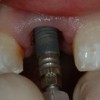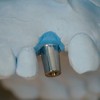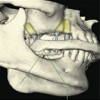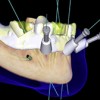A properly contoured custom impression tray will facilitate the making of the final. border molded master impression. This program describes the proper design of the tray that will facilitate the making of a quality impression and the materials currently used to fabricate these trays including tray resin and light cure resin. A detailed, fully illustrated section devoted to fabrication of these trays is also included in the program.
Complete Dentures» Next Lecture› [next_page]
Complete Dentures – Impression Tray Fabrication — Course Transcript
- 1. John Beumer III, DDS, MS Division of Advanced Prosthodontics, Biomaterials and Hospital Dentistry UCLA School of Dentistry 6. Impression Tray Fabrication This program of instruction is protected by copyright ©. No portion of this program of instruction may be reproduced, recorded or transferred by any means electronic, digital, photographic, mechanical etc., or by any information storage or retrieval system, without prior permission.
- 2. Custom Tray Fabrication Instruments & Materials Cast of mandible and maxilla Tray resin and monomer or Light cure resin Vaseline Separating media Red and blue pencil Paper cup Tongue blades Slow speed handpiece Acrylic bur Baseplate wax Wax spatula Bunsen burner
- 3. Materials Used for Impression Trays Tray resin Brittle but very accurate Easy to adjust with a knife or a handpiece with a burr while border molding Light cure resin Accurate but expensive Must be adjusted with an acrylic burr. Cannot be adjusted with a knife while border molding.
- 4. Scribe a red line at the depth of the vestibule Scribe a blue line 2mm above the red line. The blue line determines the tray extension. Block out undercut areas. The usual areas are: Frenum Buccal surface of the tuberosity Rugae Flabby portions of the alveolar ridges Maxillary Cast
- 5. Mandibular Cast Mark the vestibular region as previously described with red and blue pencil. Block out the undercuts. The usual areas are: Mylohyoid ridge Frenum Lingual side of the mandible opposite the retromylohyoid space
- 6. Mandibular Cast When the wax blockout is complete soak the cast in water for 5 minutes. Then coat the surface of the cast with a tin foil substitute.
- 7. Making the Tray – Light Cure Resin The tray material is adapted to the cast and the excess is trimmed away with a knife.
- 8. Making the Tray – Light Cure Resin The resin is cured and the edges of the trays are smoothed with an acrylic burr.
- 9. Making the Tray – Light Cure Resin Completed impression trays.
- 10. Mix approximately ¼ cup of tray resin for each tray and apply a thin layer of vaseline to your fingers. Making the Tray – Tray Resin
- 11. Wait for the material to get to a doughy consistency before you apply it to the template. Press material with a glass slab to obtain the proper thickness. Making the Tray – Tray Resin
- 12. Adapt the resin material to the cast as shown. Trim excess with a knife. Making the Tray
- 13. Place additional resin to create handles Trim excess material with a blade Allow the resin to polymerize Remove the tray from the cast. Trim the tray with an acrylic bur to the desired extensions and contours . Remove any wax adhering to the tissue surface of the tray . Making the Tray
- 14. Tray periphery should be 2 -3 mm thick. The edges should be rounded. The rest of the tray should be about 1-2 mm in thickness. Tray handle – 10mm high Completed Maxillary Tray Check List
- 15. Tray handle should be 15mm wide and extend straight down from the alveolar ridge. Completed Maxillary Tray Check List The completed tray is smooth and of the proper dimension and extension.
- 16. Finger rests Mandibular Tray Finger rests aid in holding the tray in position when making the wash impression. Without finger rests it is likely that the wash material will be forced back into the vestibule distorting this portion of the impression.
- 17. Completed Mandibular Tray Check List The finger rests (arrow) should not impinge upon the tongue space and not extend above the occlusal plane. Tray handle must extend vertically from the crest of the ridge and be approximately 10mm high and 15 mm wide. Periphery should be flush with the blue line.
- 18. Completed Mandibular Tray Check List The lingual surfaces should be concave to accommodate tongue contours. Periphery of the tray should be 2-3 mm thick. The borders should be rounded and smooth. Wax used to block out undercuts should be removed from the tissue surface.


 Single Tooth Defects in Posterior Quadrants
Single Tooth Defects in Posterior Quadrants
 Cement Retention vs Screw Retention
Cement Retention vs Screw Retention
 Angled Implants
Angled Implants
 Computer Guided Treatment Planning and Surgery
Computer Guided Treatment Planning and Surgery
